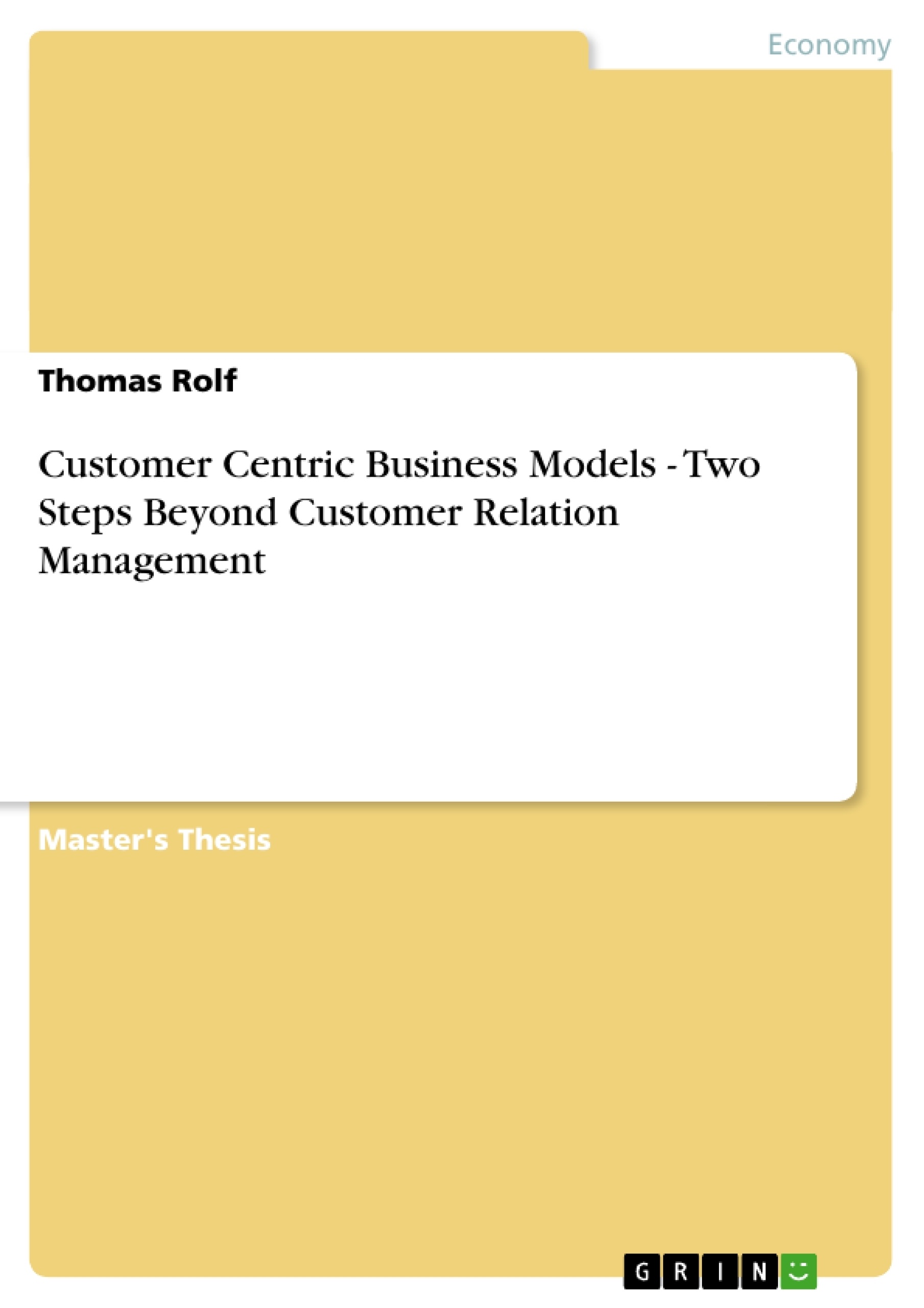The submitted dissertation critically discusses business models in the context of customer dimensions under uncertain market conditions.
The following questions summarise the fields of investigation:
• How do business models adapt to rapidly changing and buyer driven markets?
• What are the next two steps after Customer Relationship Management?
• Can the gap in the process chain between ‘Customer Relation Management’ and ‘Sup- ply Chain Management’ be bridged and how?
• How can a method be developed in order to measure the current customer orientation of a company and to compare companies among each other?
• Are customer oriented companies more profitable?
As a deductive research approach is used, beneath a small number of inductive elements, an investigation in both secondary and primary data is imperative. Subsequently a critical review of related literature along with a supporting inquiry is part of the dissertation.
The scope of the work includes background information, the discussion of future business models as well as an empiric impression of ‘customer orientation’ in German small and me- dium sized enterprises.
The most significant conclusions can be recapitulated as follows:
• Simple customer orientation can lead to less innovation, furthermore to unprofitable business and in the worst case to the elimination of a company.
• Customer oriented strategy is about building processes that are able to react to any en- vironmental or economical modification as fast as possible
• The evolution of Customer Relation Management will lead to new customer driven and pulled business models, including innovative measurement methods like ‘Return on Customer’
• The gap between Customer Relation Management and Supply Chain Management will in all probability be bridged, new concepts (e.g. Customer Chain Management) will represent this task
• A ‘balanced’ Customer Centric Index, developed as a benchmark instrument as part of the dissertation, shows that only a third of the examined companies can be interpreted as ‘customer oriented’, on the other hand ‘Sales & Marketing’ is regarded as the initial and most influencing process.
• A statistical connection between ‘being customer oriented’ and ‘profit’ could not be proved
• As a surprising and unintentional result the survey revealed that focusing on a small market (niche) is, at least for SME, a more profitable business.
[...]
Inhaltsverzeichnis (Table of Contents)
- Abstract
- Introduction
- Customer Centric Business Models
- Customer Relationship Management (CRM) - A Short Review
- Beyond CRM – Customer Centric Strategies for the Future
- From Customer Relationship Management to Customer Chain Management
- The Customer Centric Index – A New Measurement Approach
- Measuring Customer Orientation
- The Customer Centric Index (CCI)
- Customer Centricity in the German SME Sector
- Empirical Research in German SMEs
- Interpretation of Research Results
- Conclusion
Zielsetzung und Themenschwerpunkte (Objectives and Key Themes)
This dissertation examines the evolution of business models in relation to customer-centric strategies, particularly in the context of dynamic and demanding market conditions. It seeks to explore the transition from Customer Relationship Management (CRM) to more advanced customer-driven approaches and the emergence of a new concept, Customer Chain Management.
- The limitations of CRM and the need for more comprehensive customer-centric strategies.
- The development and application of a Customer Centric Index (CCI) to measure the customer orientation of businesses.
- Empirical research on customer orientation in German small and medium-sized enterprises (SMEs).
- The potential benefits and challenges of implementing customer-centric business models.
- The impact of customer-centricity on business performance and profitability.
Zusammenfassung der Kapitel (Chapter Summaries)
- Introduction: This chapter introduces the research problem and the relevance of customer-centric business models in today's dynamic market environment. It outlines the research methodology and the structure of the dissertation.
- Customer Centric Business Models: This chapter reviews the concept of Customer Relationship Management (CRM) and its limitations. It then explores emerging customer-centric strategies and the concept of Customer Chain Management, which bridges the gap between CRM and Supply Chain Management.
- The Customer Centric Index – A New Measurement Approach: This chapter presents the development and validation of a new measurement instrument, the Customer Centric Index (CCI). It outlines the methodology for assessing customer orientation and how the CCI can be used to compare different businesses.
- Customer Centricity in the German SME Sector: This chapter presents the findings of an empirical study conducted in German SMEs. It explores the prevalence of customer orientation among these businesses and investigates the relationship between customer orientation and profitability.
Schlüsselwörter (Keywords)
This dissertation focuses on customer-centric business models, Customer Relationship Management (CRM), Customer Chain Management, customer orientation, the Customer Centric Index (CCI), empirical research, German SMEs, profitability, and market dynamics.
- Quote paper
- Thomas Rolf (Author), 2003, Customer Centric Business Models - Two Steps Beyond Customer Relation Management, Munich, GRIN Verlag, https://www.grin.com/document/21211



